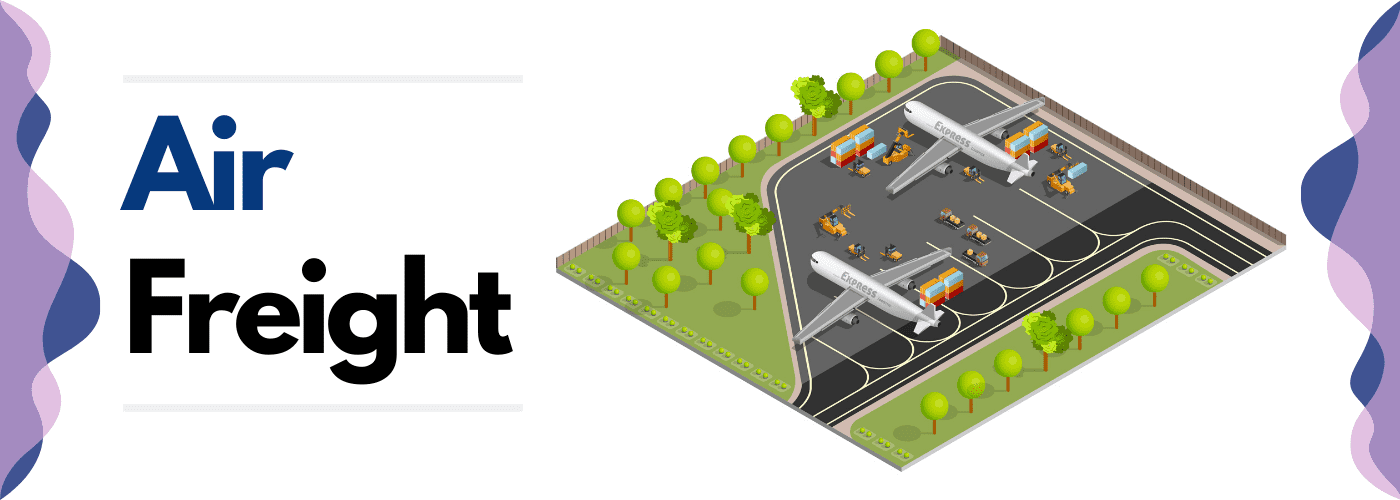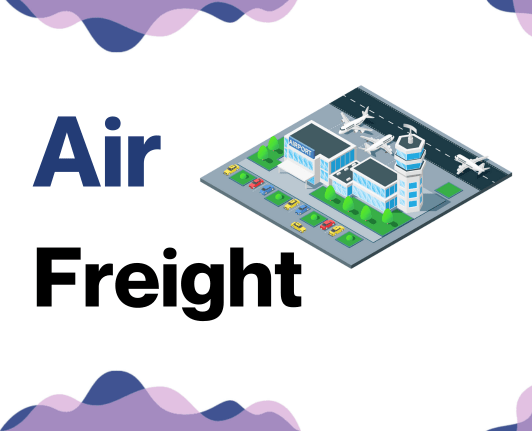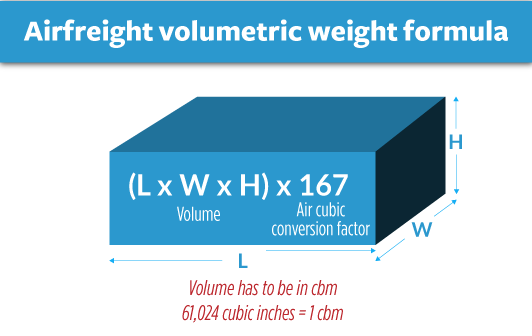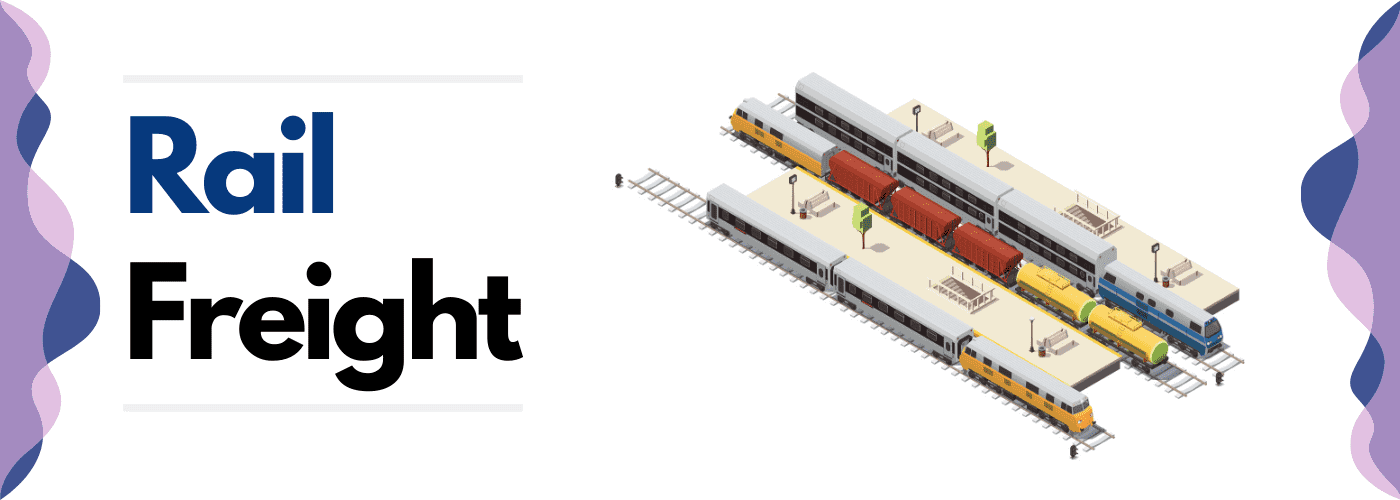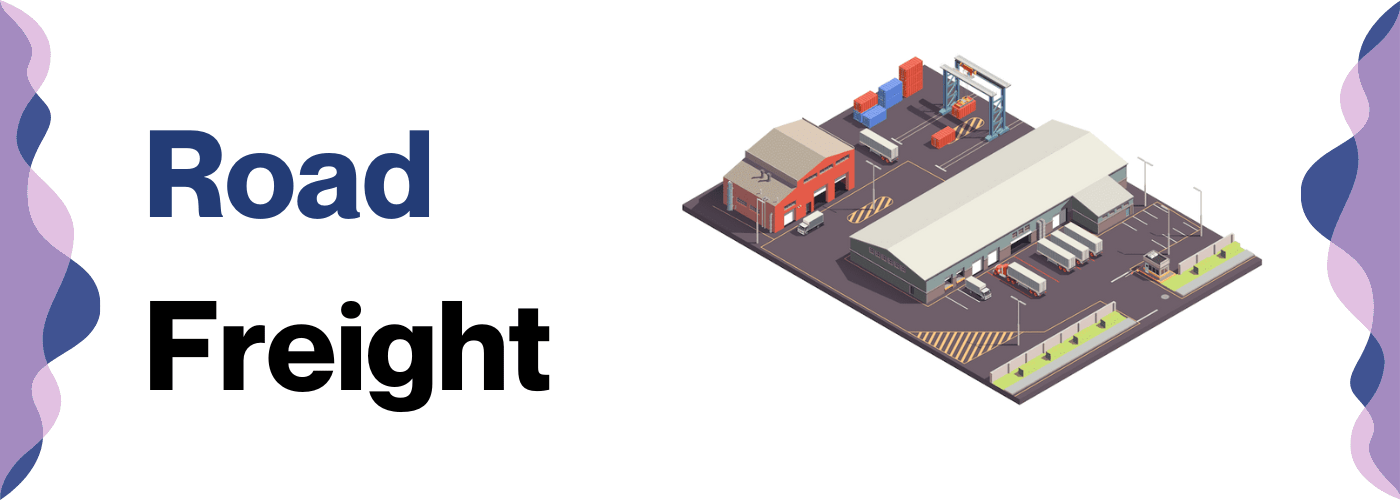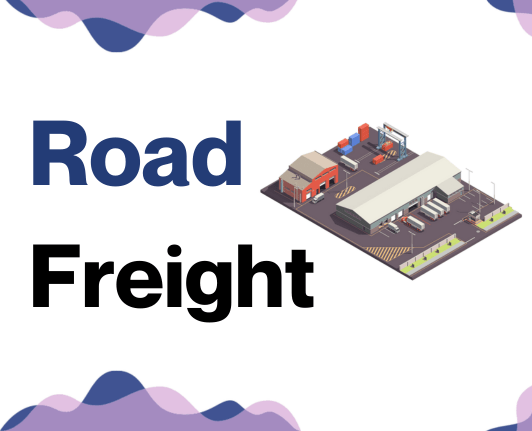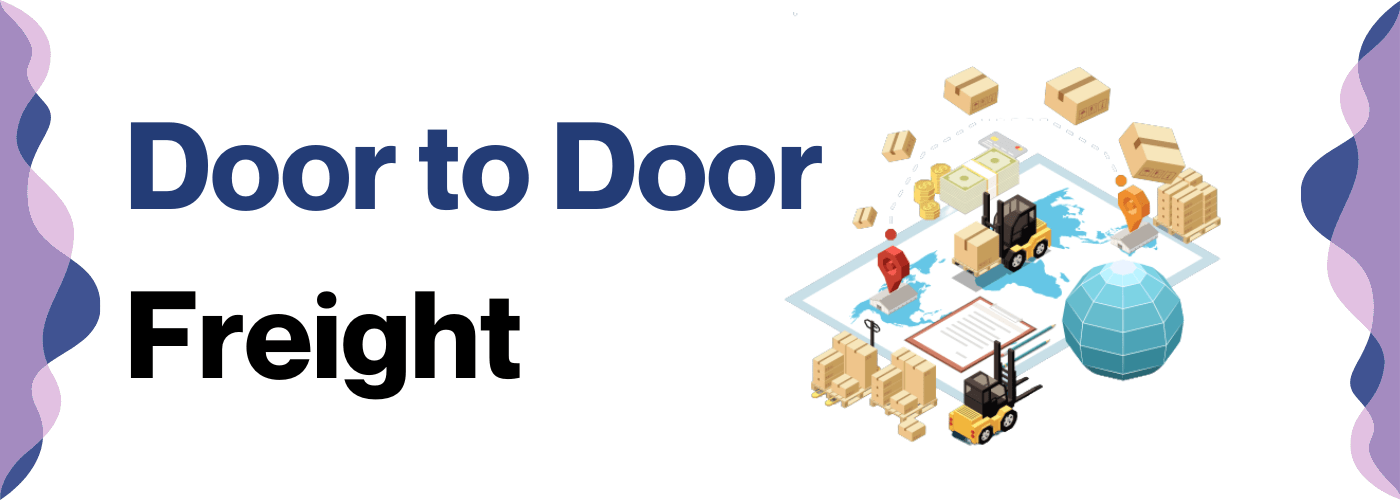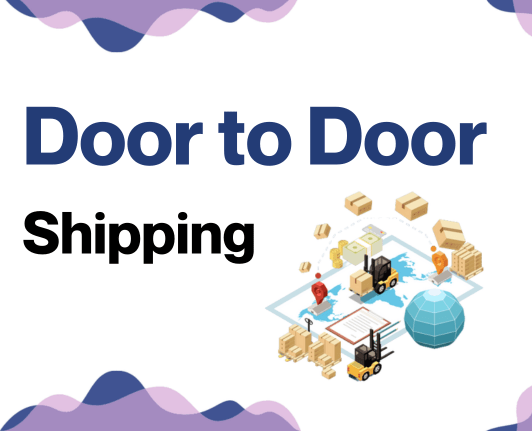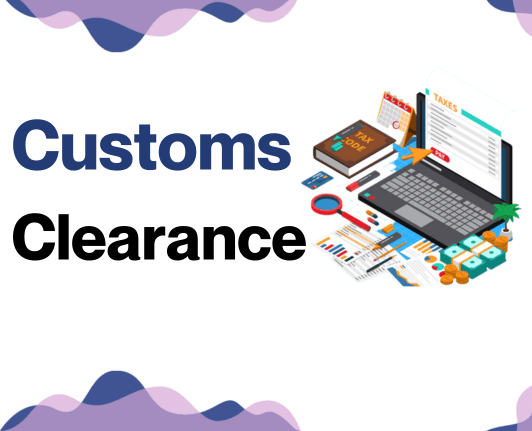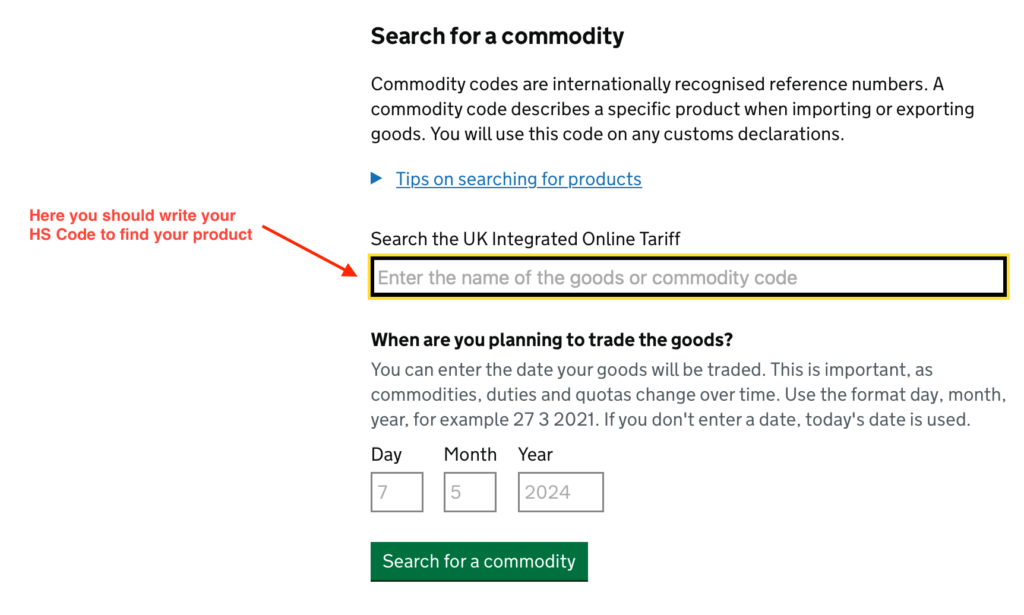Did you hear about the shipment that never left the harbor? It had no freight idea where to go! On a more serious note, the main challenges when shipping goods between the UK and Hungary can be understanding rates, estimating transit times, and deciphering customs regulations. In this guide, you'll find comprehensive details on all things shipping: from choosing between ocean, air, road, and rail freight, to the intricacies of customs clearance and the impact of duties and taxes. Tailored advice for businesses will propel you ahead, guiding you towards an efficient and cost-effective shipping strategy. If the process still feels overwhelming, let DocShipper handle it for you! As an international freight forwarder, we turn your transportation challenges into success, mastering every step of the shipping process.
Table of Contents
Which are the different modes of transportation between UK and Hungary?
Shipping goods between the UK and Hungary? You have a few options, but the best depends on your cargo and timeline. Imagine deciding between a car and a bicycle for a cross-town journey. Trucks provide speedy road transport across Europe, while trains offer value for larger consignments, a tribute to the old-world romance of travel. Then there's sea freight, the packhorse of global trade, chugging along with bulky loads. Your choice balances these options against factors like cost, time, and goods type, akin to picking the right vehicle for your city trip. Explore each one below to see what suits you best.
How can DocShipper help?
Ready to ship your goods between the UK and Hungary? Let DocShipper streamline the process for you. From arranging transport to managing customs clearance, we've got you covered. Get a free estimate in under 24 hours. For any queries, our consultants are a call away. We're here to make international shipping a breeze.
Special transportation services
Out of Gauge (OOG) Container
Definition: An OOG container allows transport of oversized or out of gauge cargo that doesn't fit into standard shipping containers.
Suitable for: Heavy, tall or wide items requiring extra space, such as machinery, industrial equipment, or large parts.
Examples: Wind turbine blades, construction machinery, large vehicles.
Why it might be the best choice for you: If you have oversized goods that can't fit in a standard container, OOG shipping is your go-to. It ensures your equipment reaches Hungary from the UK safely and intact.
Break Bulk
Definition: Break bulk involves shipping goods separately, not in containers, often on pallets or sacks. This method is mostly used when goods can't be containerized.
Suitable for: Goods of varied sizes and forms, including machinery, construction equipment, or ingredients like grain.
Examples: Timber, pipes, manufacturing equipment.
Why it might be the best choice for you: If you have items that are unsuitable for containerization due to their size, shape or nature, the break bulk method is oftentimes your best bet.
Dry Bulk
Definition: Dry bulk refers to shipping un-packaged, loose cargo loaded directly onto the vessel.
Suitable for: Commodities shipped in large quantities, particularly homogeneous, granular materials.
Examples: Coal, iron ore, grains, and cement.
Why it might be the best choice for you: For sizeable shipments of dry goods, or when packaging isn't necessary, shipping dry bulk is an efficient and cost-effective option.
Roll-on/Roll-off (Ro-Ro)
Definition: Ro-Ro vessels transport vehicles that can be driven on and off the ship, eliminating the need for cranes or other equipment.
Suitable for: All types of wheeled cargo, including cars, trucks, trailers, and construction equipment.
Examples: Personal cars, delivery trucks, tractors, mobile cranes.
Why it might be the best choice for you: If you're shipping motorized equipment or vehicles, the Ro-Ro method offers a fast, efficient, and secure way to transport them from the UK to Hungary.
Reefer Containers
Definition: Reefer containers are refrigerated shipping containers that maintain a specific temperature during transport.
Suitable for: Temperature-sensitive cargo requiring cold or frozen conditions throughout the shipping process.
Examples: Fresh produce, meat, seafood, pharmaceuticals, and other perishable items.
Why it might be the best choice for you: If you're shipping goods that must maintain a certain temperature, reefers ensure that your products will arrive in Hungary in optimal condition.
Can't decide on the best shipping method for your specific needs? Here at DocShipper, we're always ready to help you determine the ideal logistics solution. Reach out to us today for a free, no-obligation shipping quote in under 24 hours. We're here, making your shipping process simpler, better, and stress-free.
DocShipper Tip: Air freight might be the best solution for you if:
- You're facing tight deadlines or need rapid delivery. Air freight is your quickest option, which aligns well with the fast-paced business environment.
- Your shipment is relatively small, under 2 CBM. Air freight is ideal for these more compact loads.
- Your cargo's destination isn't easily reached via sea or rail. This makes air freight a viable option, especially given the extensive network of airports available.
Air freight between UK and Hungary
Transporting products from the UK to Hungary by air freight efficiently bridges the almost 1,000 miles between them. With speedy delivery and impressive reliability, this method shines for small, high-value goods. Think delicate electronics or designer fashion: safe with air freight and delivered pronto. Quicker than a Ferrari, it's your express lane for trade.
But here's the catch - many shippers tumble into pitfalls, like miscalculating the shipping cost by not using the correct weight formula - like ordering a pizza but paying for an entire banquet! Unaware of efficient strategies, they end up shelling out excess money. This guide goes beyond these common troubles, helping you master the art of air freight without losing precious pennies. Stay with us - we're about to up your shipping game!
Air Cargo vs Express Air Freight: How should I ship?
One day, your shipment's chilling in the UK, the next it's savouring goulash in Hungary - such is the marvel of air freight. Whether you opt for express air freight (think of it as the track star sprinting in its dedicated plane lane), or try the sturdier, slower paced air cargo (imagine it reservedly cruising in a regular airline), your choice really hangs on the speed, volume and cost needs of your business. Let's help you make that crucial pick.
Should I choose Air Cargo between UK and Hungary?
Considering air cargo between the UK and Hungary? British Airways and Wizz Air lead the pack in this sector: fast, reliable, and cost-effective from 100/150 kg (220/330 lbs) of cargo. Check their dedicated cargo services: British Airways World Cargo and Wizz AirCargo. While air freight is efficient, remember transit times can be longer due to fixed schedules. Weighing cost, speed, and schedule, air cargo might just hit the sweet spot for your budget and deadlines.
Should I choose Express Air Freight between UK and Hungary?
Express Air Freight is a premium transportation service, utilizing dedicated cargo planes devoid of passengers. If you're dealing with shipments less than 1 cubic meter or 100/150 kg (220/330 lbs), it's the ideal choice. Major courier entities like FedEx, UPS, and DHL have led the way in this field, offering fast, reliable, and often more cost-effective solutions for smaller cargo. Opting for this service may streamline your UK to Hungary freight processes, adding speed, efficiency, and potentially saving costs. It's tailored towards prioritizing your cargo safety and delivery time, proving to be an astounding fit for smaller, time-sensitive shipments.
Main international airports in the UK
Heathrow Airport
Cargo Volume: Heathrow Airport manages over 1.4 million metric tons of cargo each year, making it the busiest airport in the UK for cargo traffic.
Key Trading Partners: The airport interacts with many nations, with the USA, China, India, Australia, and Canada being key trading partners.
Strategic Importance: Located in the capital city, London, Heathrow's strategic position as a major hub makes it integral to UK's international trade operations.
Notable Features: Heathrow has two parallel runways and five operational terminals, with a dedicated cargo terminal able to handle a variety of goods.
For Your Business: With its robust cargo handling facilities and connections to major economic hubs worldwide, Heathrow is an attractive option for businesses needing to transport goods quickly and efficiently.
London Gatwick Airport
Cargo Volume: Gatwick Airport handles over 350,000 metric tons of cargo annually.
Key Trading Partners: Key trading partners include Spain, Italy, the United Arab Emirates, and France.
Strategic Importance: Despite being the second-largest airport in the UK, its proximity to London provides businesses with alternative shipping routes to those offered by Heathrow.
Notable Features: Gatwick has a single-use runway and two terminals. Notably, it hosts a mix of traditional carriers and low-cost airlines, offering numerous flight options.
For Your Business: If your business deals with European countries, selecting Gatwick Airport for your shipping needs could provide cost efficiencies and greater connectivity within Europe.
Manchester Airport
Cargo Volume: With cargo volumes surpassing 100,000 metric tons a year, Manchester Airport ranks third in the UK.
Key Trading Partners: Key trading partners include the United States, Spain, Germany, and China.
Strategic Importance: Manchester Airport is the largest outside London, serving as a northern hub and playing a crucial role in connecting the region with the rest of the world.
Notable Features: The airport has two runways and three terminals. The World Freight Terminal handles all cargo operations.
For Your Business: Manchester Airport's broad range of freight services and strategic location allows it to offer valuable shipping alternatives to businesses located outside the London area.
Stansted Airport
Cargo Volume: Stansted handles over 250,000 metric tons of cargo annually.
Key Trading Partners: Stansted has strong trade connections with US, Germany, Hong Kong, UAE, and China.
Strategic Importance: It serves as an important point of entry and exit for goods travelling to and from North America and Asia.
Notable Features: Stansted has one runway and one terminal. The airport is a major hub for several large freight operators, including FedEx and UPS.
For Your Business: If you’re seeking a reliable and efficient cargo service for long-haul international shipments, Stansted Airport can meet your needs.
East Midlands Airport
Cargo Volume: Nearly 440,000 metric tons of cargo are transported through East Midlands Airport each year.
Key Trading Partners: Main trade partners include the United States, Spain, Germany, Poland, and the Netherlands.
Strategic Importance: As the UK's largest pure freight airport, a significant amount of e-commerce, mail and general freight pass through East Midlands Airport.
Notable Features: East Midlands Airport is a major hub for DHL, UPS, TNT, and Royal Mail.
For Your Business: Businesses engaged in high volume or e-commerce trading can take advantage of East Midlands Airport's strong freight focus and extensive connection networks.
Main international airports in Hungary
Budapest Ferenc Liszt International Airport
Cargo Volume: Handling over 201,000 metric tons of cargo in 2023, this airport stands as Hungary's busiest air freight, demonstrating robust cargo capability.
Key Trading Partners: Germany, China, France, the United Kingdom, and the United States.
Strategic Importance: Budapest Airport serves as a vital cargo hub for Central Europe, connecting to over 125 destinations worldwide.
Notable Features: The airport is home to the BUD Cargo City, a highly specialized cargo handling facility that accelerates freight processing times.
For Your Business: If you require direct access to Central European markets, Budapest Airport's solid cargo volume, extensive network, and leading cargo facilities can provide optimal support for your shipping needs.
Debrecen International Airport
Cargo Volume: Though smaller than Budapest, Debrecen handled over 30,000 metric tons of cargo in 2019, indicating a growing cargo handling capacity.
Key Trading Partners: Germany, United Kingdom, and Italy.
Strategic Importance: Debrecen is Hungary's second largest airport and strategically important for businesses seeking to reach Eastern Hungary and adjoining regional markets.
Notable Features: The airport has a modern terminal and cargo handling facilities, with a runway size suitable for landing large freight aircraft.
For Your Business: If reaching Eastern Hungary and nearby markets is part of your business strategy, Debrecen International Airport's modern cargo facilities and growing role in air freight can support your shipping operations efficiently.
How long does air freight take between UK and Hungary?
Shipping between the UK and Hungary typically takes an average of 1-3 days by air freight. However, transit times can vary depending on the specific airports involved, the weight, and the nature of the goods being shipped. Some packages might need extra time due to complex custom procedures or logistic hiccups. Therefore, if you're looking for precise transit times, consulting a freight forwarder like DocShipper can save you a lot of guesswork and ensure your cargo arrives promptly.
How much does it cost to ship a parcel between UK and Hungary with air freight?
As a rough ballpark, the average air freight rate between UK and Hungary can range from £1.50 to £5.00 per kg. However, it's impossible to give an exact price at this stage due to variables like airport locations, parcel dimensions, weight, and the nature of goods. Rest assured, we're committed to crafting bespoke shipping plans for each distinct case to offer the best rates. Connect with our team to get a customized quote within 24 hours. Share your specific shipping needs today, and let's navigate the nuances of international logistical challenges together.
What is the difference between volumetric and gross weight?
Gross weight refers to the total weight of a shipment, including goods, packaging, pallets, and any other materials. Meanwhile, volumetric weight, also known as dimensional weight, considers not just weight but the space a package occupies in an aircraft.
Gross weight is calculated simply by weighing the entire shipment and recording the results in kilograms. Easy enough, right? Now the volumetric weight can be a little trickier. The myth suggests some complicated maths, but it’s actually straightforward. For air cargo freight, you calculate the volumetric weight by multiplying the package’s length, width, and height (all in cm) then divide the result by 6,000. For Express Air Freight services, it’s very much alike, only a smaller number: divide by 5,000.
For example, consider a shipment of machine parts packed into a box measuring 1m x 1m x 2m weighing 100kg. The gross weight is directly given as 100kg (or 220.46 lbs for the non-metric folks out there). To find the volumetric weight for an air cargo shipment, we multiply length (100cm) by width (100cm) by height (200cm) which equals 2,000,000 cubic centimetres. Divided by 6,000, we get a volumetric weight of 333.33kg (or 734.91 lbs). Express Air Freight follows the same process but divided by 5,000, resulting in a volumetric weight of 400kg (or 881.85 lbs).
So, what is this all about? It's about costs. Carriers base their charges on either gross or volumetric weight, whichever is greater. If a lightweight parcel takes up a lot of space, it's charged by volume. For a small but heavy item, it's loaded by gross weight. So businesses, understand your weights, it dictates the price to get your goods in the air.
DocShipper tip: Rail freight might be the best solution for you if:
- You are looking for a cost-effective transportation method for large volumes.
- Your shipping route is well-connected by rail, providing a reliable and environmentally friendly option.
- Your cargo's destination and origin are near rail terminals, minimizing the need for additional road transportation.
Rail freight between UK and Hungary
No need to worry about National Lampoon's European Vacation-style mishaps when sending your goods by rail freight! Did you know that the UK-Hungary rail route was forged back in the late 19th century? And it's more than just a passageway for your merchandise. It's a conduit for history, connecting nations and facilitating impressive economic synchronization across Europe. From manufactured goods to raw materials, these rail tracks have seen it all. Traversing France, Belgium, Germany, and Austria, this rail freight connection underpins robust trade ties between UK and Hungary.
However, the ol’ trade-off between cost and transit times lurks in the background. Rail freight offers a cheaper solution than air freight but can't match the time efficiency. Navigating customs procedures on such a multinational route can be complex. Challenges? Absolutely, but that's what we're here to help with! So, ponder over whether this historic rail line aligns with your logistics needs. No Chevy Chase fluff here, just good ole' rail freight facts.
What are the main train stations between UK and Hungary?
London Gateway
Strategically located on the edge of London with excellent road and rail links, London Gateway is a modern port and logistics park offering world-class facilities. It stands out for its deep-water berth that can handle the largest cargo vessels. Geared towards being a logistics hub for the South of England, maximizing this station could optimize your business's distribution strategy for higher efficiency and reduced transportation costs.
BILK (Budapesti Intermodális Logisztikai Központ)
Situated in Budapest, BILK is one of the most modern intermodal terminals in Hungary and the region at large. With rail links extending to diverse parts of Europe, it can handle a high volume of freight, making it an essential player in Hungary's international rail network. If your business needs to move goods reliably and time efficiently, integration within the BILK logistical network may just be the strategic advantage you are looking for. Its connections with important logistics hubs throughout Europe, including the UK, offer a versatile and reliable shipping route.
How long does rail freight take between UK and Hungary?
Transit times between the UK and Hungary by rail freight depend on various factors such as the freight carrier, route, and customs procedures. Typically, it takes about 7-10 days on average. Below, you'll find a breakdown of rail networks linking China and Europe, complete with transit times and departure frequencies. Please note, that these are just estimates - actual transit times can be unpredictable due to a wide range of factors.
| UK Train stations | Hungary Train Stations | Average Transit Time (Days) |
| London Gateway | Budapest International Logistics Center | 7-10 days |
*Remember, these times are estimates only. Several factors could lead to changes in these transits durations.
What are the advantages of rail transport between UK and Hungary
Rail transport, often overlooked, offers unique benefits for shipping between the UK and Hungary. Imagine a middle ground - faster than sea freight, but more economically efficient than air freight. With regular and predictable schedules, rail freight can be a reliable choice. For instance, transporting 50 jars of premium English peanut butter to sell in a Budapest grocer could be more cost-effective and efficient by rail, since speed is a factor, but not the utmost priority. Similarly, if you're a Hungarian automotive parts manufacturer shipping heavy, non-perishable goods to a plant in Birmingham, choosing rail freight could save you unnecessary air freight costs. Rail transport, with its cost and speed benefits, could be the perfect option tailored to your diverse shipping needs.
How much does shipping goods by train between UK and Hungary cost?
Determining an exact cost to ship your goods from the UK to Hungary by train, just like with air and sea freight, is a dynamic puzzle due to a range of factors. Considerations like cargo size, season, service level, or even the pandemic's impact can cause fluctuations. But don't sweat it! Our team is an ace problem-solvers, committed to meticulously reviewing your unique needs to offer competitive, custom quotes. Doesn't a tailored approach sound great? Connect with us now and prepare for a reassuring ring within 24 hours, ready with your free quote. It's that simple! Don't worry, we've got your back.
DocShipper tip: Road freight might be the best solution for you if:
- You're seeking a budget-friendly solution for shorter hauls. Road freight often comes out on top in terms of cost-effectiveness and speed for these kinds of distances.
- Your end destination is either within your own continent or just across the border. For such regional or intra-continental shipments, road freight is typically the most direct and rapid method.
- Your cargo has unique dimensions or shapes. The adaptability of trucking allows for a wide range of goods that may not conform to the size limitations of sea or air transport.
Trucking between UK and Hungary
Exploring the UK-Hungary corridor, trucking proves to be an effective choice for firms prioritizing cost and convenience. With competitive transit times hinging on routes and road conditions, road freight often edges out sea and rail counterparts in terms of speed and directness.
However, as with any transport mode, it's a balance—the nimbleness of road freight might raise costs slightly. While this presents an economical approach for lighter and less volume-intensive shipments, it's still important for businesses to weigh the pros and cons, looking beyond price alone, towards dependability and service fit. Let's navigate this option in more detail.
What if I can’t fill a truck between UK and Hungary?
Choosing the right freight option between the UK and Hungary can truly make a difference for your business. This section will explore LTL and FTL shipping methods, evaluating their pros and cons, and helping you find the most cost-effective and flexible choice for your business delivery needs. Let's delve into the specifics.
LTL: Less than Truck Load
Sure, let's get right into it. Less Than Truckload, often shortened to LTL, is a shipping method where your goods take up less than a full truckload. It's ideal when your freight is under 15 cubic metres (CBM), because you only pay for the space you occupy, splitting the cost with other shippers.
Let's bring it to life with an example. Imagine you're sending a batch of furniture from London to Budapest. The total volume of your couches and tables is 10 CBM. Instead of paying for a full truck, you send an LTL shipment, saving you money and helping the environment by sharing space with other shippers.
Now, here's a quick guide to When should you use LTL:
- Your goods total less than 15 CBM.
- You're looking for a cost-effective method for smaller shipments, like that furniture batch.
- Your goods aren't time-sensitive. LTL freight can take a bit longer as the truck stops to pick up more shipments.
- You want to decrease your carbon footprint by sharing transport resources.
- You can handle a slightly more complex paperwork process, as multiple consignees are involved.
Choosing LTL over FTL could make a huge difference in your freight experience and your bottom line.
When should you use FTL?
- Your goods occupy more than half the capacity of a truck, i.e., 13-15 CBM, making the cost per CBM more efficient with FTL.
- You prioritise speed and don't want to co-load with other shipments, which could lead to stopovers and possible delays.
FTL: Full Truck Load
Full Truck Load (FTL) is a transportation mode where a truck carries one dedicated shipment. It lets the cargo owner capitalize on the truck's space, making it best suited for shipping larger volumes. If your freight is more than 13-15 CBM, choosing FTL freight allows you to utilize a dedicated truck, ensuring your goods reach Hungary from the UK without mixing with other shipments.
For instance, if you're shipping a complete furniture showroom from the UK to Hungary, it likely exceeds 15 CBM. You don't want to break down the shipment, and FTL shipment would perfectly cater to your requirement, ensuring a seamless delivery.
When should you use FTL?
- Your goods occupy more than half the capacity of a truck, i.e., 13-15 CBM, making the cost per CBM more efficient with FTL.
- You prioritise speed and don't want to co-load with other shipments, which could lead to stopovers and possible delays.
- Your products are high-value, fragile, or perishable, and you want to minimise the risk by avoiding mixed or multiple handling.
- You prefer a more climate-controlled and secure freight space, where the environmental conditions can be controlled for the entire shipment.
What are the main routes between UK and Hungary?
Shipping over land from the UK to Hungary primarily involves traversing several major European highways. The journey often begins with M20 in the UK, leading to the Channel Tunnel. Post crossing into France, your cargo embarks on the extensive European highway network – mainly E40, extending through Belgium and Germany. In Austria, route changes to A1 and A4, leading straight to Hungary. Key connecting cities include Brussels, Frankfurt, Vienna, and finally, Budapest. However, dynamic factors like road conditions, traffic, potential construction, and weather influence route choices, with forwarders regularly optimizing for efficiency and safety. Although shorter in distance, road freight is slower than air or rail, but offers door-to-door service, making it a viable option for certain businesses.
What are the road transit times between UK and Hungary?
The average road transport time between the UK and Hungary is roughly 20–24 hours. Keep in mind, however, this is an estimate. Factors like heavy traffic, varying circulation rules, and potentially poor road conditions in certain countries can complicate schedules. For example, peak season, public holidays, or road constructions might extend this duration. Remember, this is just an estimate - reach out to us directly, and we'll be able to provide you with a cross-border freight quote within 24 hours.
How much does trucking cost between UK and Hungary?
Trucking stuff from UK to Hungary isn't a one-price-fits-all deal like grabbing a burger! Factors like what's being shipped, its weight, even road tolls jump the cost around like a kangaroo on a trampoline. Worried about your budget? Ease up! Our squad dives in, mixing match-up possibilities to give you the friendliest rates. We quote according to your unique needs, not a generic figures list. Let's chat, and we'll get your goods trucking at a price that smiles back at your wallet!
DocShipper tip: Door to Door might be the best solution for you if:
- You prioritize ease and a hassle-free shipping experience. Door-to-door services manage the entire process, from collection to final delivery.
- You appreciate the efficiency of having one dedicated contact. With door-to-door, a single agent is responsible for overseeing all elements of your shipment.
- You want to limit the number of times your cargo is transferred. Door-to-door services minimize the switches between various transport methods, lowering the chances of damage or loss.
Door to door between UK and Hungary
If you're transporting goods between the UK and Hungary, consider international door-to-door shipping – a convenient and efficient means of transport where your freight is delivered straight from sender to receiver. From simplifying logistics to easing documentation hassles, this method has plenty of benefits. So, without further delay, let's dive into the heart of door to door shipping.
Overview – Door to Door
Struggling with the complexities of shipping from the UK to Hungary? Door to door service removes the hassle, handling all logistics from pickup to delivery. With advantages such as ease and efficiency, it's no wonder this service is the top choice among DocShipper clients. However, it's crucial to understand that costs may be higher due to the convenience provided. Alleviate your shipping woes with our popular door to door service - the most straightforward solution to your logistical challenges.
Why should I use a Door-to-door service between UK and Hungary?
Whoever said logistics is as exciting as watching paint dry probably never experienced the thrill of door-to-door services! Here's get down to five compelling reasons why your business should be tapping into this service between the UK and Hungary.
1. Stress-No-More Logistics: Eliminate the rollercoaster of emotions that comes with logistics. Door-to-door services handle everything, including goods pickup, which means no more juggling multiple logistics providers. Now, isn't that a sigh of relief?
2. The Need for Speed: Let's face it – time is money. When you are dealing with urgent shipments, you need a service that can deliver (pun intended). Door-to-door service ensures your goods go from your hands to your customer's hands faster than you can say Logistics!
3. Coddling your Cargo: Transporting complex, delicate, or downright tricky cargo can be a headache. Door-to-Door services offer the specialized care you need, treating your cargo like the star it is.
4. Trucking till You're Tucked In: The beauty of Door to Door service is that it handles all the transportation, including trucking. Got a delivery somewhere in the depths of Hungary? No problem, they'll take it right to the doorstep.
5. Ultimate Convenience: This service is basically your personal logistics valet. By handling all the nitty-gritty details, Door to Door service lets you focus on what really matters - growing your business.
So, why not pour a cup of tea, sit back, and relax while your goods travel smoothly from the UK to Hungary with Door to Door service?
DocShipper – Door to Door specialist between UK and Hungary
Ease your shipping worries with DocShipper. Our proficient team ensures seamless door-to-door service, handling everything from packing to transit, and customs clearance for all shipping types, between the UK and Hungary. Benefit from stress-free, A to Z logistics management with a dedicated Account Executive by your side. Reach out now for a free estimate within 24 hours or directly connect with our expert consultants.
Customs clearance in Hungary for goods imported from UK
Customs clearance - the process your goods undergo to meet certain legal standards when traversing borders - can be a complex labyrinth teeming with unexpected fees and charges. A seemingly slight misstep can result in your goods being stalled at the Hungarian border, leading to delays and potential financial loss. Understanding the ins and outs of duties, taxes, quotas, and licenses is paramount to smoothly navigate this process. Fret not, as our comprehensive guide is here to give you an in-depth look at these crucial aspects.
Remember, with DocShipper, you don't have to go it alone. We are here to help you through this process, whether you're shipping any kind of goods anywhere in the world. Simply provide details like the origin, value, and HS Code of your goods to help us assist you better. Your successful shipping project is just an estimate away!
How to calculate duties & taxes when importing from UK to Hungary?
Starting to estimate the duties and taxes for your imports from the UK to Hungary doesn't have to be a daunting process. Primarily, you need to familiarise yourself with several key components that determine the cost. These components are the country of origin, the HS Code corresponding to your product, the Customs Value of your goods, the Applicable Tariff Rate, and any additional taxes or fees that may apply.
Get off on the right foot by first identifying the country where your goods were manufactured or produced. This will be your 'country of origin', and it plays a crucial role in shaping your duty and tax liabilities. By knowing this and the other components, you can be better equipped to govern your shipping operations successfully.
Step 1 - Identify the Country of Origin
Determining the country of origin might seem like a no-brainer, but its importance is multifaceted. First, it's a customs requirement. Without it, your shipment won’t budge. Second, it lets you know if any specific trade agreements apply. The UK and Hungary, for example, fall under the EU-UK Trade and Cooperation Agreement, which can affect customs duties.
Third, the right origin documentation helps avoid delays at customs. Fourth, it ensures your understanding of the correct tariffs, taxes, and duties. Lastly, knowing the country of origin clarifies if there are any import restrictions in place.
When it comes to UK to Hungary imports, make sure you're aware of potential restrictions on certain types of goods like animal products and plants. Exploring the details of these restrictions can save you from unexpected headaches down the line. Always remember - forewarned is forearmed. In the often complex world of international logistics, knowledge is not only power; it's efficiency.
Step 2 - Find the HS Code of your product
The HS Code or Harmonized System Code is integral to international trade. It's a standardized numerical method of classifying traded products universally. This system allows countries to exchange goods smoothly and helps in determining customs tariffs, collecting international trade statistics, and creating freight tariffs.
Your product's HS Code is often readily available from your supplier, as they are well-acquainted with the goods they're exporting and the related trade regulations. So, it's always a good first step to ask them.
But if you're unable to obtain the HS Code from your supplier, don't worry. You can easily search for it using an online tool.
The Harmonized Tariff Schedule is a handy lookup tool where you'll find your HS Code. Simply input the name of your product in the search bar provided.
Once the results are populated, you're just a step away from finding your HS Code. Navigate to the 'Heading/Subheading' column and voilà, the number you've been looking for should appear right there.
However, here's a word of caution: Ensure accuracy while choosing the HS Code, as any discrepancy can cause potential setbacks such as delays in shipping and fines. Accurate HS Codes are not only vital for your business operations but also crucial for maintaining institutional compliance.
Here's an infographic showing you how to read an HS code.
Step 3 - Calculate the Customs Value
You might be wondering, isn't the customs value the same as the product value? Not quite. The customs value, also known as the CIF value, differs slightly. It isn't just the price of your goods alone. Instead, imagine it as a comprehensive sum - it includes the price of your goods, the cost of international shipping, and the insurance cost.
To illustrate, consider you're shipping bottled wine priced at $1000 from UK to Hungary. Your shipping cost is $200 and the insurance cost is $50. The customs value won't be the product price ($1000), but the sum of all three elements, $1250 ($1000 goods + $200 shipping + $50 insurance).
This CIF value is pivotal as it forms the basis for customs duty calculation. Accurate computation ensures smoother clearance at Hungary's customs.
Step 4 - Figure out the applicable Import Tariff
Import tariffs are essentially taxes or duties paid on specific types of goods imported from one country to another - in this case, goods imported into Hungary from the UK. Determining the correct tariff can be crucial, as it forms part of the calculation for import duties payable.
The UK uses its own Trade Tariff Tool to identify applicable import tariffs. Here's a straightforward process with a practical example to guide you:
1. Visit the UK's Trade Tariff Tool, and you should reach a page that looks like this :
2. Here you should enter the Harmonized System (HS) code for your product (let's assume the HS code for a bicycle - 87120000).
3. Review the listed duties and taxes for your product, and here we go!
For instance, if the tariff identified for bicycles from the UK to Hungary is 14%, and the Cost, Insurance, and Freight (CIF) value of the shipment is USD 5000, the import duties can be calculated as follows:
Import Duties = Import Tariff CIF value = 0.14 5000 = $700 USD
This way, you can easily anticipate your expenses and avoid any unwelcome financial surprises. Your shipping journey from the UK to Hungary should now feel a lot less complicated!
Step 5 - Consider other Import Duties and Taxes
Beyond the standard tariff rate, you may encounter other duties depending on the specifics of the product and its origin. For instance, there might be 'excise duties' on specific goods like tobacco or alcohol. 'Anti-dumping taxes' may be levied on goods priced below fair market value to prevent market distortions.
More notably, the VAT rate plays a crucial role. In Hungary, the standard rate is around 27%, which is generally applied to the customs value plus any import duty. To give you a practical illustration, let's say you’re importing a product valued at $1000, with an import duty of 10%. Your calculated VAT will be one like: $1000 + $100 ($1000 x 10%) = $1100 x 27% = $297.
Remember, these examples might not hold true for every situation, as there can be variations depending on country of origin and product type. You must always verify the latest rules and rates from reliable sources. We recommend taking the time to understand these nuances to avoid any unwanted surprises during your shipping process.
Step 6 - Calculate the Customs Duties
As you navigate through customs clearance in Hungary for goods imported from UK, Step 6 is crucial - calculating the Customs Duties. This step involves a few key values: the customs value of your goods, VAT, and potentially anti-dumping taxes, and Excise Duty. Here's a comprehensive formula that might help: Customs Duties = (Customs Value x Duty Rate) + (VAT x (Customs Value + Duty)) + Anti-dumping Taxes and Excise Duty.
Consider this example where you only need to calculate Customs Duties: If your goods' customs value is $10,000 and duty rate is 3.5%, your dues would be $350.
In a case where both customs duties and VAT apply, let's say with a VAT rate of 27%, your dues would be: $350 (duties) + 27% x ($10,000+ $350) = $3,094.50.
If you've got customs duties, VAT, anti-dumping taxes and Excise Duty, like a customs value of $10,000, duty rate of 3.5%, VAT rate of 27%, an anti-dumping tax of 3% and Excise Duty of 2%, this would be your calculation: ($350 (Duties) + $2,794.50 (VAT)) + $300 (Anti-dumping Tax) + $200 (Excise Duty) = 3644.50.
However, with these complexities at hand, seeking professional help can save you both time and money. DocShipper’s customs clearance services seamlessly handle every step of the process, ensuring you don't pay a penny more. Contact us for a free quote within 24 hours. We're here to streamline your global transactions.
Does DocShipper charge customs fees?
DocShipper, as a licensed customs broker in the UK and Hungary, manages the customs clearance process, and charges fees for such services. Be aware, this is separate from customs duties/taxes which go directly to the government in the destination country. For peace of mind and utmost transparency, we provide you with official documents from the customs office, so you can be sure you're only paying what the government charges, and not a penny more. It's like your grocery receipt, showing government taxes separately, straight from the source.
Contact Details for Customs Authorities
UK Customs
Official name: HM Revenue & Customs
Official website: https://www.gov.uk/government/organisations/hm-revenue-customs
Hungary Customs
Official name: National Tax and Customs Administration of Hungary
Official website: https://nav.gov.hu/en
Required documents for customs clearance
Shipping goods internationally? Tackling customs can feel like decoding a secret language. We'll break down the purpose of these key documents: Bill of Lading, Packing List, Certificate of Origin, and Documents of Conformity (CE standard), to ease your documentation journey. Yes - it's all paperwork, but it's important paperwork. Let us help you sort it out.
Bill of Lading
The Bill of Lading, your product's passport for shipping goods from the UK to Hungary, officially transfers ownership and guarantees the goods arrive intact. Unlike traditional practices, the telex release offers digital confirmation, saving you time and reducing paperwork hustle. Similarly, for air cargo, the Air Waybill (AWB) is your ticket, documenting the contract of carriage. Remember, these documents are non-negotiable, detail your goods precisely! For instance, a Manchester-based furniture manufacturer shipping oak tables to a Budapest retailer can smooth their course with an accurate, complete Bill of Lading. Pair this savvy business move with the speed and convenience of electronic releases to stay ahead in your international logistics game.
Packing List
Delving into the not-so-exciting but fundamental arena of international freight, the Packing List lands a star role. Just imagine - your shipment is a Hollywood movie, the customs officers are the critics. The Packing List? It's the movie synopsis laying out every essential plot point (block or packet!) in your UK-Hungary shipment.
It's your duty as a shipper to produce an accurate, meticulous Packing List, whether your cargo travels by the gentle rhythms of the sea or illuminates the sky. If you're shipping a pallet of books, for example, the Packing List needs to indicate the exact number, their individual weight, and collective weight. Variance in this 'storyline' could mean a hold up at customs, and no one wants a plot twist like that! Realize the narrative power in your hands, and keep control of your shipping blockbuster.
Commercial Invoice
Navigating customs clearance between UK and Hungary? Your Commercial Invoice is critical. It should detail the goods you're shipping - their value, weight, origin and destination, and the HS codes. It's not just a shopping list; customs use this to calculate duties, and any discrepancies can cause delays. So, let's say you're shipping bumper parts for cars from Birmingham to Budapest. The HS code is 870810 - don't get it wrong on your Commercial Invoice. And remember, your invoice, packing list, and Bill of Lading should be consistent. Any mismatch could result in your shipment spending more time at customs. Consider the Commercial Invoice as your passport to successful cargo delivery.
Certificate of Origin
Navigating between UK and Hungary, a Certificate of Origin is your secret weapon for smooth customs clearance. It’s your product's passport, telling customs its home country. Did you know this nifty document can unlock preferential duty rates? Say you're exporting speciality teas from Manchester to Budapest. A correctly completed certificate that affirmatively shouts 'Made in Britain!' could see your shipment enjoying lower, or even zero, tariffs, making your tea more competitively priced in Hungarian markets. So, don't forget to clearly mention the country of manufacture on your Certificate of Origin and turn this often overlooked piece of paper into a serious asset. As ever, authentic and precise documentation is a must. Happy shipping!
Certificate of Conformity (CE standard)
When shipping goods from UK to Hungary, remember: your items must comply with CE standards, a mandatory requirement in the European market. This isn't about quality assurance; rather, it's a declaration that your goods meet EU safety, health, and environmental protections standards. Think of it like a passport enabling your goods to travel smoothly across European borders.
Now, it's essential to note: the CE marking isn't identical to US standards or the UK's new UKCA marking. However, familiarity with these requirements facilitates better international business transactions. Stay ahead by verifying whether your product needs a CE or UKCA marking before shipping. Check the link above for a deeper understanding of UKCA mark. Remember, later headaches are prevented by proactivity now!
Your EORI number (Economic Operator Registration Identification)
Whipping your goods across borders between the UK and Hungary should feel like a breeze with your EORI number secured. It's like your business passport, unique to you, that smoothly tracks all your imports and exports within the EU. Post-Brexit, both UK and EU operators are required to have an EORI from customs authorities, even though the UK isn't an EU member anymore. So, whether your shipment is a pallet of Hungarian spices heading to London or UK-manufactured machinery being transported to Budapest, don't leave them in dock limbo. Register for your EORI online to ensure a seamless shipping journey. Remember, no EORI, no clearance! It's that crucial.
Get Started with DocShipper
Navigating the customs clearance maze between the UK and Hungary can be daunting. Why not let DocShipper experts handle it? Say goodbye to unexpected hiccups and hello to stress-free shipping. We'll guide you through every step, ensuring transparency and compliance. Ready for a hassle-free experience? Reach out for a free quote tailored to your needs – we promise a response in less than 24 hours.
Prohibited and Restricted items when importing into Hungary
When shipping goods to Hungary, it's vital to know the lay of the land. Ever floundered with understanding import rules? You're not alone. Let's unpack complex customs steps and highlight the items that are off-limits or have restrictions. To avoid shipment setbacks, let’s dive right into Hungary's regulations.
Restricted Products
- For Medicinal products and drugs, you have to apply for a permit from the National Institute of Pharmacy and Nutrition in Hungary.
- If you're importing firearms and ammunition, a license issued by the Ministry of Interior is a must-have.
- For hazardous substances, a permit from the National Public Health Centre is required.
- To import radioactive materials, the Hungarian Atomic Energy Authority should issue a license.
- If you're dealing with animal and plant products, a license from the Ministry of Agriculture is necessary.
- Finally, cultural goods and antiques require a permit from the National Office of Cultural Heritage.
For all of these items, make sure you have fully understood and met the special import requirements before attempting to ship.
Prohibited products
- Narcotics and illegal drugs
- Explosives and fireworks
- Offensive weapons, such as switchblades or brass knuckles
- Endangered species of plants and animals, including products made from them
- Unauthorized pharmaceuticals and drugs
- Radioactive materials
- Obscene or propaganda materials
- Counterfeit and pirated goods
- Real and toy firearms/ammunition without permit
- Certain agricultural products from outside the European Union, including soil, plants, plant products, and certain animals or animal products
- Currency exceeding €10,000 (or its equivalent)
- Cultural goods and works of art that are protected under hometown heritage laws.
- Alcohol, tobacco, and certain food items exceeding allowable quantities.
Are there any trade agreements between UK and Hungary
Hungary, being a member of the European Union (EU), has access to every trade agreement the EU has signed, including the Canada-EU Comprehensive Economic and Trade Agreement (CETA). However, since Brexit, the UK is no longer a part of EU agreements, including CETA. Currently, there are no specific FTAs, EPAs, or other trade agreements between the UK and Hungary. But do not let this deter you. Ongoing discussions for a bilateral trade agreement may improve your business prospects in the future. For now, familiarize yourself with the Generalized System of Preferences (GSP) rules for shipping without trade agreements.
UK - Hungary trade and economic relationship
UK-Hungary trade relations date back to the establishment of diplomatic ties in 1920. Over the years, they've forged a robust economic partnership, with Hungary being the UK's 33rd largest trading partner in the four quarters to the end of Q4 2023. Key sectors include automotive, IT, pharmaceuticals, and the creative industries. Major commodities traded involve vehicles, electrical machinery, and medicinal and pharmaceutical products. In 2023, bilateral trade was worth £8.3 billion, with UK exports to Hungary totaling £3.6 billion and imports worth £4.7 billion. Direct UK investment in Hungary was high in the same year, corroborating the immense value both countries place on this vital partnership. These figures reflect the enduring connection, ongoing investment, and mutual success in their trade and economic relationship.
Your Next Step with DocShipper
Feeling the weight of international shipping between the UK and Hungary? Don't let logistics confusion stall your journey. Lean on DocShipper's experience and expertise. Whether by sea, air, road, or rail, we can handle the comprehensive processes. Say goodbye to customs headaches and hello to smooth sailing. Ready to revolutionize your shipping experience? Act now – contact us today.
Additional logistics services
Explore a world of extra convenience with DocShipper's diversified logistics services. From sourcing to delivery, we handle every part of your supply chain, ensuring seamless, stress-free operations. Experience the difference today!
Warehousing and storage
Discovering reliable warehousing options can be tricky, especially when you need bespoke conditions like temperature control for certain commodities. Worry not! Our warehousing services ensure your goods are kept under adequate conditions, taking this worry off your plate. Want a deep dive? Head over to our Warehousing page for more.
Packaging and repackaging
Proper packaging is your ticket to ensuring your goods' safety en route from the UK to Hungary. Think ceramics or electronics; a trustworthy agent can ace that for you. Repackaging? That’s smashing outfits into a suitcase, but for freight - a game changer for bulk shipments. Learn how this can revolutionize your shipping process in our dedicated guide: Freight packaging.
Cargo insurance
Think of cargo insurance as your safety net, much more specific than mere fire insurance. Protection against losses due to theft, damage, or mishandling in transit, it's tailored to the perils unique to shipping instead of generic hazards. Picture sending fragile Hungarian porcelain or critical UK automotive parts, the peace of mind is priceless. Explore more on our dedicated page: Cargo Insurance.
Supplier Management (Sourcing)
Struggling to find trusted suppliers for your UK to Hungary shipments? DocShipper has got your back. We act as your eyes and ears on the ground in Asia, East Europe, and beyond, tackling the procurement process head-on. Don't worry about language barriers, we've mastered that part. This way, you can focus on your core business while we navigate the waters of global sourcing. More info on our dedicated page: Sourcing services.
Personal effects shipping
Moving from the UK to Hungary? Have fragile or oversized items? Don't fret; our Personal Effects Shipping especially caters to your needs. We ensure an efficient transition of your belongings, regardless of size or fragility. For example, we'll securely pack your grandma's heirloom chandelier, ensuring it reaches Budapest in perfect condition. More info on our dedicated page: Shipping Personal Belongings.
Quality Control
Ensuring product standards from the get-go, especially when moving goods from the UK to Hungary, can save you time, money, and anxiety down the line. Think of the products needing rework due to poor stitching in a fashion line—a costly hurdle, isn’t it? Our Quality Control service helps you nip such issues in the bud, verifying your goods meet all standards before they journey. Smoother process, happier customers. More info on our dedicated page: Quality Inspection.
Product compliance services
Getting your goods from A to B is one thing. Making sure they comply with destination regulations is another. That's where our Product Compliance Services come in. We conduct laboratory tests, providing you the certification needed to ensure that your products meet every rule. An example: you have a toy to ship, we ensure it passes safety standards. We've got you covered, from paperwork to peace of mind. More info on our dedicated page: Product compliance services.
FAQ | For 1st-time importers between UK and Hungary
What is the necessary paperwork during shipping between UK and Hungary?
When shipping from the UK to Hungary, a range of documentation is crucial. For sea transport, the bill of lading is a must-have, whereas an air way bill is needed for air freight. But don't worry, we at DocShipper will take care of these for you. What we'll need from your side is the packing list and the commercial invoice. Bear in mind that goods-specific documents might also be required, including a Material Safety Data Sheet (MSDS) or various certifications. Making shipping as straightforward as possible for our clients is always our priority.
Do I need a customs broker while importing in Hungary?
Yes, having a customs broker is highly advised when importing goods into Hungary. The customs process can be quite complex, requiring specific knowledge and a range of mandatory documents. A knowledgeable customs broker doesn't just interact with the customs authority on your behalf, they also navigate the entire process, ensuring smooth handling of your cargo. As DocShipper, we routinely represent your cargo at customs in the majority of our shipments. Leveraging our expertise, we're able to streamline the procedure and simplify your importing experience. We consider your success our priority.
Can air freight be cheaper than sea freight between UK and Hungary?
Determining if air freight is cheaper than sea freight between the UK and Hungary isn't straightforward and depends on factors such as route, weight, and volume of the cargo. Typically, air freight could be more cost-effective when your shipment is less than 1.5 cubic meters or weighs under 300 kg (660 lbs). At DocShipper, we are committed to providing the best option tailored to your specific needs. Rest assured your dedicated account executive is always on hand to offer the most affordable and efficient shipping solution.
Do I need to pay insurance while importing my goods to Hungary?
While insurance isn't a direct requirement for shipping goods, including imports to Hungary, we at DocShipper strongly advise opting for it. This recommendation is based on the fact that there are numerous potential incidents during transit, such as damage, loss, or theft. Insuring your goods is an effective way to safeguard your investment from such unforeseen events. Remember, it's always better to be safe than sorry. Safe shipping!
What is the cheapest way to ship to Hungary from UK?
Considering the geographical proximity of the UK and Hungary, we'd generally recommend road freight as the most economical option. This shipping method is suitable for bulk or heavy items, and while it may take a bit longer than air freight, it can significantly reduce your shipping costs. Always remember, the best shipping method can vary based on your specific cargo's type, volume, and urgency.
EXW, FOB, or CIF?
Selecting between EXW, FOB, or CIF is primarily guided by your relationship with your supplier. Remember, your supplier may not be proficient in logistics. Thus, it's advised to engage us, DocShipper, in managing the international freight and process at the destination. Typically, suppliers operate under EXW (your goods loaded at their factory door) or FOB (all local charges covered up to the origin terminal). Irrespective of the terms, we can provide a comprehensive door-to-door service, ensuring a smooth shipping process that accommodates all your needs.
Goods have arrived at my port in Hungary, how do I get them delivered to the final destination?
If your goods have landed in Hungary under CIF/CFR incoterms, you'll need a customs broker or freight forwarder to facilitate customs clearance and delivery. Import charges will apply. Though, you can opt for our comprehensive DAP incoterms for end-to-end delivery. We recommend confirming these details with your DocShipper account executive for precise assistance.
Does your quotation include all cost?
Indeed, our quotation includes all expenses with the sole exception of the duties and taxes at the destination. We believe in full transparency and make sure there are no hidden fees to catch you off guard. Feel free to reach out to your dedicated account executive for an estimate of the duties and taxes.
DocShipper info: Did you like our article today? For your business interest, you may like the following useful articles :
- Freight Forwarders and Sourcing Supply Agents in Hong Kong
- Freight between the UK and the Netherlands — Prices — Delays — Customs Clearance — Transport
- Freight between the United Kingdom and the United States — Prices — Delays — Customs Clearance — Transport
- Freight between the UK and Malaysia — Prices — Delays — Customs Clearance — Transport
- Freight Shipping between UK and Turkey — Rates — Transit Times — Duties and Taxes

